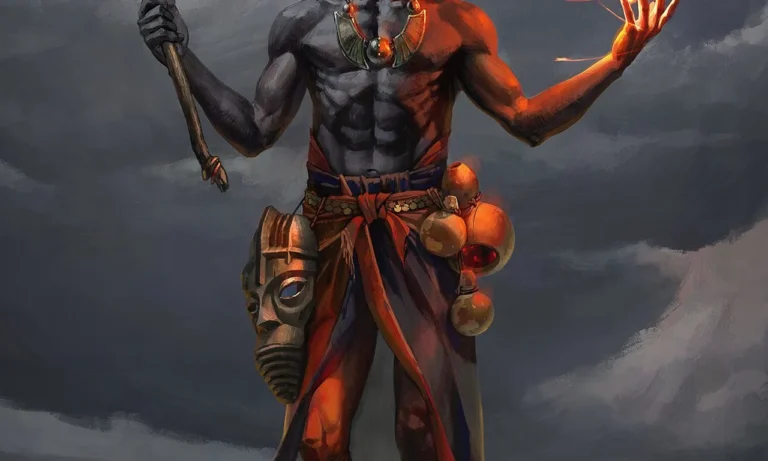Via Yahaya Michael Bolakale
April 14, 2024 | 4:06 PM
Tricksters have at all times held a singular place in mythology and folklore throughout cultures and civilizations. They embody the essence of mischief, crafty and unpredictability, usually blurring the road between good and evil. Among the many numerous trickster figures, two stand out prominently of their respective mythologies: Esu in Yoruba mythology and Loki in Norse mythology.…


Tricksters have at all times held a singular place in mythology and folklore throughout cultures and civilizations. They embody the essence of mischief, crafty and unpredictability, usually blurring the road between good and evil.
Among the many numerous trickster figures, two stand out prominently of their respective mythologies: Esu in Yoruba mythology and Loki in Norse mythology.
Regardless of coming from completely different cultures and continents, the parallels between these tricksters are placing and provide fascinating insights into the human psyche and the common themes embedded in storytelling.
Esu: The Yoruba Deceiver:
In Yoruba mythology, Esu (often known as Eshu) is a posh deity related to communication, crossroads and deception. He’s thought of a divine messenger, facilitating communication between people and the gods, however his mischievous nature usually results in chaos and confusion.
Esu is depicted as a shapeshifter, who can tackle completely different varieties and personas, making it difficult to foretell his actions. His function as a trickster is multifaceted, starting from enjoying pranks on individuals to testing their morality and knowledge.
Esu's portrayal displays the Yoruba perception within the steadiness between order and chaos, in addition to the interconnectedness of the religious and materials worlds.
Regardless of his penchant for mischief, Esu is neither fully benevolent nor malicious; moderately, he embodies the anomaly inherent in human nature, difficult typical views of morality and justice.
Loki: The Norse Trickster:
In Norse mythology, Loki performs an identical function to the everyday trickster determine. Often called the god of mischief, Loki is a posh and enigmatic character whose actions usually lead to each catastrophe and redemption.
Not like different gods who embody noble virtues similar to braveness and knowledge, Loki's motivations are pushed by his want for chaos and disruption.
Loki's crafty and guile are evident in his many exploits, from deceptive the gods into undesirable conditions to bringing in regards to the downfall of highly effective figures like Balder, Odin's beloved son.
Regardless of his antagonistic tendencies, Loki often aids the gods along with his crafty mind and shape-shifting skills, blurring the strains between good friend and foe.
Parallels and contrasts:
Though Esu and Loki come from completely different cultural backgrounds, their similarities are plain. Each are tricksters revered for his or her humor, unpredictability, and talent to problem societal norms. They function catalysts for change, disrupting the established order and pushing people to query their beliefs and values.
Moreover, Esu and Loki share frequent traits similar to the flexibility to shapeshift, mastery of language, and a penchant for mischief.
Each deities inhabit liminal areas – Esu at crossroads and Loki on the boundaries between worlds – symbolizing their function as intermediaries between completely different realms.
Nonetheless, there are additionally notable variations between Esu and Loki, which mirror the distinctive cultural context from which they emerge.
Esu is deeply intertwined with Yoruba cosmology and spirituality and embodies the rules of steadiness and reciprocity inherent within the Ifá custom. In distinction, Loki's portrayal in Norse mythology is characterised by a way of existential nihilism and ethical ambiguity, reflecting the cruel and unforgiving panorama of the Viking Age.
Conclusion:
The research of trickster figures like Esu and Loki provides useful insights into the human situation and the universality of storytelling. Regardless of coming from completely different cultural backgrounds, these tricksters share frequent traits and themes that resonate throughout time and area.
Whether or not revered as divine messengers or feared as brokers of chaos, tricksters remind us of the inherent complexity of human nature and the everlasting wrestle between order and dysfunction.
By exploring the parallels and contrasts between Esu and Loki, we acquire a deeper appreciation for the wealthy vary of mythological traditions that proceed to fascinate and encourage us all through the ages.
